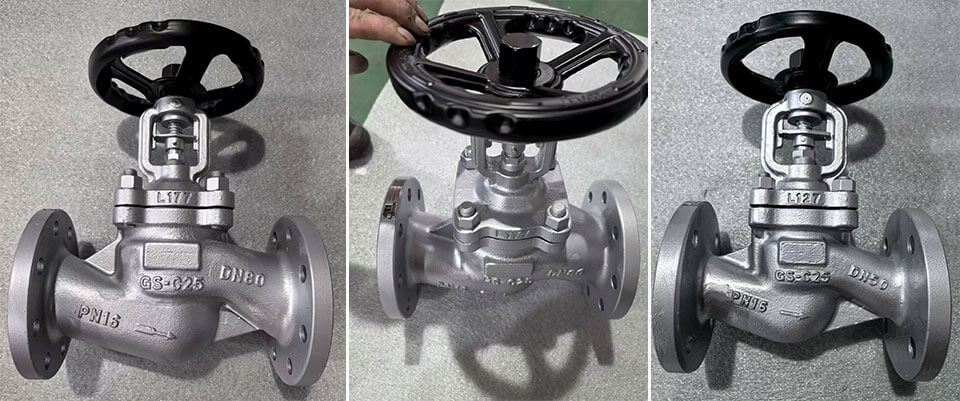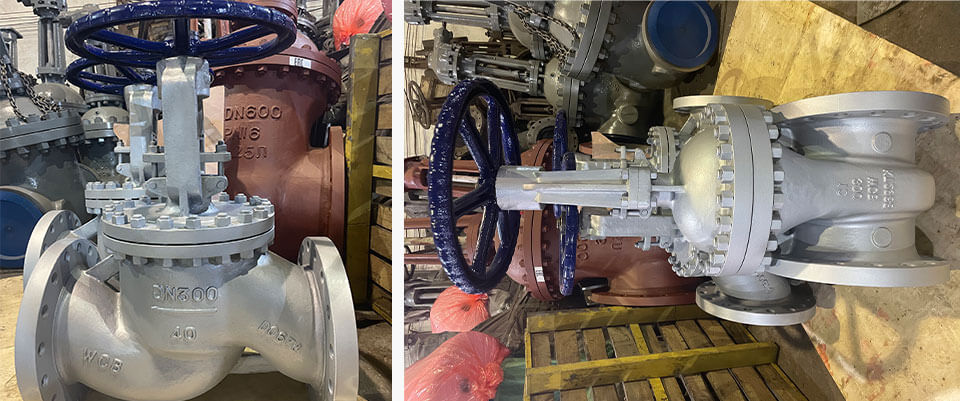Case

Case

In complex piping systems, globe valves serve as critical opening and closing devices. They reliably shut off or start the flow of media by vertically raising and lowering the disc. They are widely used in industrial installations and in domestic water and heating systems. However, improper installation and use of this seemingly simple globe valve can easily lead to internal or external leakage, operational difficulties, and even valve damage, posing safety hazards. This article systematically explains the correct installation and use of globe valves to ensure their performance and longevity.
Before installing a globe valve, carefully verify that the valve model, diameter, and pressure rating match the piping system.
Clean the valve body from impurities and inspect the sealing surface for integrity. If scratches or corrosion are found, repair or replace them immediately. Furthermore, the valve should be kept dry during transportation and storage to prevent moisture and dust from entering the valve cavity.
Globe valves should generally be installed according to the flow direction arrow marked on the valve body. The valve body should be perpendicular to the pipeline, with the stem facing upward, for ease of operation and maintenance. If installed on a horizontal pipe, ensure the handwheel faces upward to prevent impurities from depositing and affecting opening and closing. When connecting flanges, tighten the bolts evenly and diagonally to avoid uneven force that could cause deformation of the sealing surface. Welding should be performed while the valve is open to prevent welding slag from damaging the sealing surface.

1) When operating a globe valve, open and close it slowly to avoid sudden shocks that could cause water hammer.
Opening: Slowly turn the handwheel counterclockwise until the valve is fully open. After fully open, it is recommended to slightly turn it counterclockwise about a quarter turn. This helps compensate for thermal expansion and contraction, protects the sealing surface, and reduces the risk of the valve sticking when in the fully open position for extended periods.
Closing: Turn the handwheel steadily clockwise. When the disc contacts the seat and a clear resistance is felt, the valve is securely closed. Do not use tools such as force rods to force tightening. Overtightening can severely damage or even crush (for non-metallic sealing surfaces) the sealing assembly, resulting in permanent valve damage and internal leakage.
2) Regular Maintenance and Inspection
Regularly lubricate the valve stem threads to prevent sticking.
Regularly inspect the valve stem packing gland for minor leaks. If so, try tightening the gland bolts evenly and slightly. For valves that are not frequently used, turn the handwheel regularly (e.g., monthly) to prevent rust and seizure on the valve stem, packing, threads, and other parts.
3) It is not recommended to leave the valve in the half-open position for extended periods to prevent erosion of the orifice.
4) Under high-temperature or high-pressure conditions, wait until the system has cooled before performing maintenance or disassembly.
Q: Can a globe valve be installed in reverse?
A: Absolutely not. This is the most common mistake in globe valve installation. Installing in the reverse direction completely violates the valve's design principles, leading to a series of problems and seriously affecting sealing performance and service life.
Q: Can a globe valve be used to precisely control flow?
A: Not recommended. Although flow can be roughly controlled by varying the opening, the flow path design of a globe valve creates significant flow resistance when not fully open, and the medium can erode the disc's sealing surface. Long-term use as a regulating valve can severely damage the sealing surface. A specially designed regulating valve should be used for flow control.
Q: The handwheel is fully closed, but the valve is still leaking. What should I do?
A: This is usually caused by damaged sealing surfaces or trapped debris. Try rapidly opening and closing the valve fully several times to use the fluid's impact to dislodge any small impurities. If this doesn't work, the sealing surface is worn or damaged, and the valve needs to be disassembled, repaired, or replaced.

As a Chinese valve manufacturer with over 25 years of experience, WEIZIDOM offers globe valves in a variety of specifications and materials to suit various operating conditions. Our products strictly adhere to international standards such as ISO, EN, ANSI, and API, and all valves undergo hydraulic and air tightness testing before leaving the factory. We also provide professional installation guidance and after-sales support to help customers ensure efficient and stable valve operation.
Proper installation and use are key to ensuring efficient operation of globe valves. By following standard procedures, regular maintenance, and scientific operation, users can significantly improve system safety and equipment life. Choosing WEIZIDOM globe valves means choosing reliable quality, comprehensive service, and lasting trust.